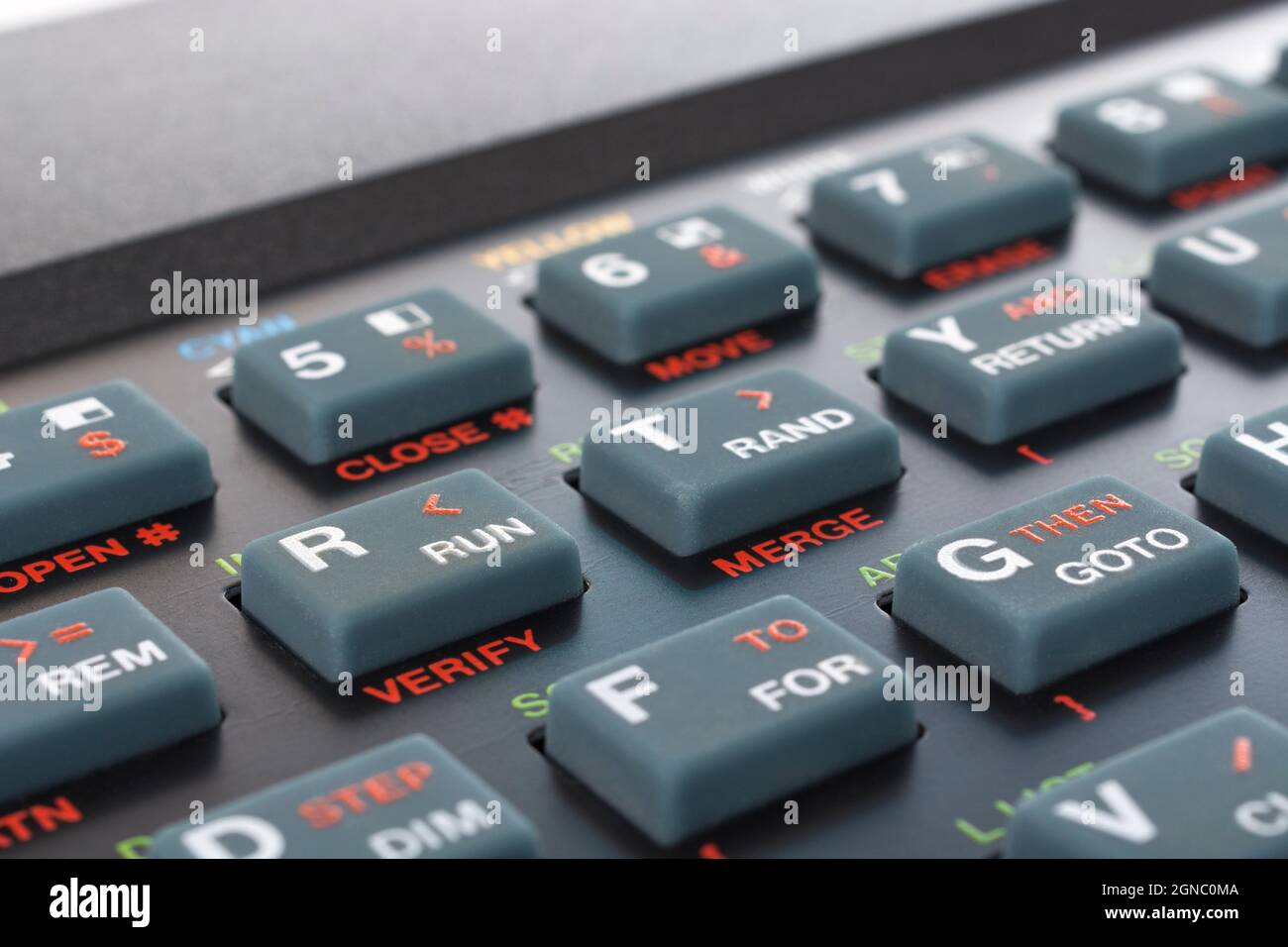

The BASIC interpreter was developed from that used on the ZX81 and a ZX81 BASIC program can be typed into a Spectrum largely unmodified, but Spectrum BASIC included many extra features making it easier to use. For example, pressing "G" when in programming mode would insert the BASIC command GO TO. The Spectrum's chiclet keyboard (on top of a membrane, similar to calculator keys) is marked with BASIC keywords. The machine's Sinclair BASIC interpreter is stored in ROM (along with fundamental system-routines) and was written by Steve Vickers on contract from Nine Tiles Ltd. The machine was manufactured in Dundee, Scotland, in the now closed Timex factory. The "ear" port has a higher output than the "mic" and is recommended for headphones, with "mic" for attaching to other audio devices as line in. The machine includes an expansion bus edge connector and 3.5 mm audio in/out ports for the connection of a cassette recorder for loading and saving programs and data.
#Sinclair zx spectrum keyboard software
Software was later available that could play two channel sound. Sound output is through a beeper on the machine itself, capable of producing one channel with 10 octaves. The Commodore 64 used colour attributes in a similar way, but a special multicolour mode and hardware sprites were used to avoid attribute clash. Other machines available around the same time, for example the Amstrad CPC or the Commodore 64, did not suffer from this limitation. This became a distinctive feature of the Spectrum, meaning programs, particularly games, had to be designed around this limitation. This scheme leads to what was dubbed colour clash or attribute clash, where a desired colour of a specific pixel could not necessarily be selected. Īn "attribute" consists of a foreground and a background colour, a brightness level (normal or bright) and a flashing "flag" which, when set, causes the two colours to swap at regular intervals. Altwasser received a patent for this design. In practice, this means that all pixels of an 8x8 character block share one foreground colour and one background colour.


To conserve memory, colour is stored separate from the pixel bitmap in a low resolution, 32×24 grid overlay, corresponding to the character cells. The image resolution is 256×192 with the same colour limitations.
#Sinclair zx spectrum keyboard plus
Text can be displayed using 32 columns × 24 rows of characters from the ZX Spectrum character set or from a set provided within an application, from a palette of 15 shades: seven colours at two levels of brightness each, plus black. Video output is through an RF modulator and was designed for use with contemporary television sets, for a simple colour graphic display. Hardware design was by Richard Altwasser of Sinclair Research, and the outward appearance was designed by Sinclair's industrial designer Rick Dickinson. The original model has 16 KB (16×1024 bytes) of ROM and either 16 KB or 48 KB of RAM. The Spectrum is based on a Zilog Z80, a CPU running at 3.5 MHz (or NEC D780C-1 clone). ZX Spectrum 48K motherboard (Issue 3B: 1983, heat sink removed) The machine was officially discontinued in 1992. The Commodore 64, Dragon 32, Oric-1, Oric Atmos, BBC Micro and later the Amstrad CPC range were rivals to the Spectrum in the UK market during the early 1980s.

Licensing deals and clones followed, earning Clive Sinclair a knighthood for services to British industry. Some credit it as the machine which launched the British information technology industry. The introduction of the ZX Spectrum led to a boom in companies producing software and hardware for the machine, the effects of which are still seen. The Spectrum was among the first home computers in the United Kingdom aimed at a mainstream audience, similar in significance to the Commodore 64 in the US or the MO5 in France. The Spectrum was released as eight different models, ranging from the entry level with 16 KB RAM released in 1982 to the ZX Spectrum +3 with 128 KB RAM and built in floppy disk drive in 1987 altogether they sold over 5 million units worldwide (not counting unofficial clones). Referred to during development as the ZX81 Colour and ZX82, it was launched as the ZX Spectrum to highlight the machine's colour display, compared with the black and white display of its predecessor, the ZX81. It was first released in the United Kingdom on 23 April 1982 and went on to become Britain's best-selling microcomputer. The ZX Spectrum ( UK: / z ɛ d ɛ k s/) is an 8-bit personal home computer developed by Sinclair Research. Compact Cassette, ZX Microdrive, 3-inch floppy disk on Spectrum +3


 0 kommentar(er)
0 kommentar(er)
